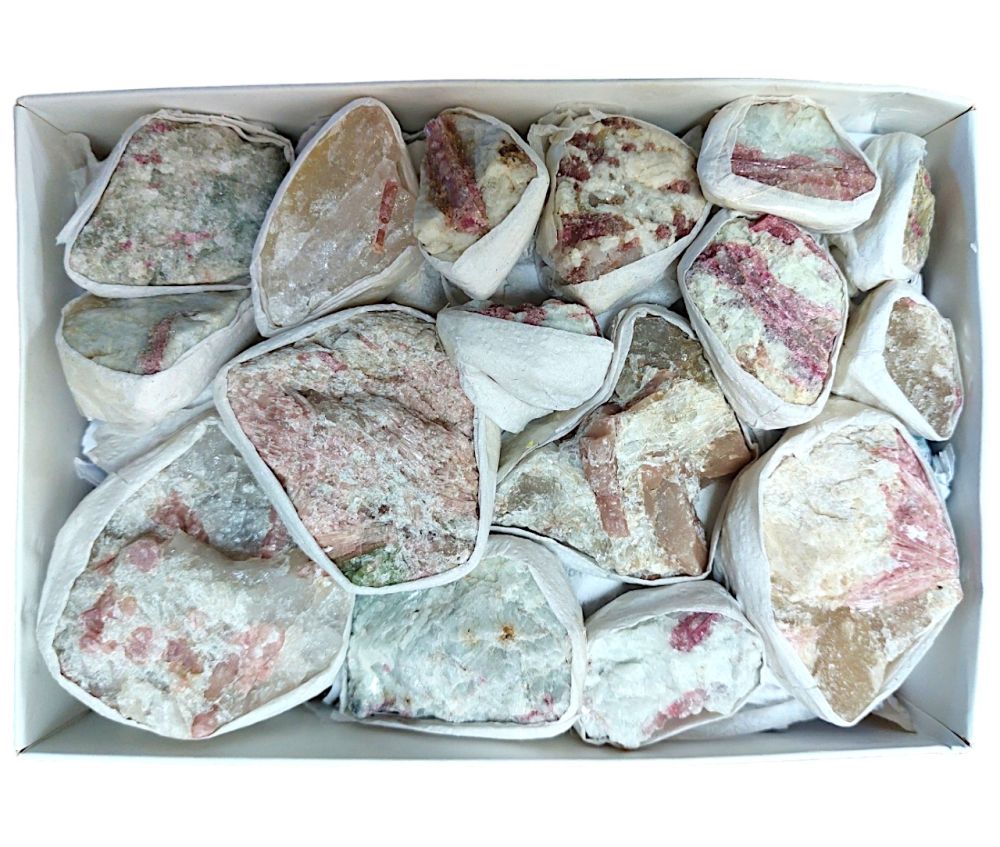We use cookies to make your experience better.
TimmersGems has a new website, existing customers also need to register again.
Pink Tourmaline (also called Rubellite) in a beautiful box 28x12 cm
Pink Tourmaline (also called Rubellite) in a beautiful box 28x12 cm. These boxes have been specially put together for Rockshop
Availability:
In stock
SKU
121193
Tourmaline (quartz) is a group of minerals, all cyclosilicates. The minerals in this group share a characteristic chemical formula: AX3Y6(BO3)3 Si6O18(O, OH, F)4. The A may contain calcium or sodium. The X can consist of aluminum, iron, lithium or magnesium. The Y is normally aluminum, but can also be chrome or iron. There may be some potassium in the A position, manganese can be found in X, and vanadium can be found in Y, but these elements are not commonly found in the formulas of the tourmaline group. Tourmaline occurs in pegmatites, metamorphites, magmatites and alluvial deposits. Although tourmaline was already known in ancient times in the Mediterranean region, it was only introduced to Western Europe from Sri Lanka by the Dutch in 1703. They named the new gemstone with a Sinhala word "Turmali", which means "stone of mixed colors". Traditionally, rubellites were used as gemstones - they were used by artists as a talisman, because they were said to increase artists' creative powers. Tourmalines have certain unique properties. They are piezoelectric, meaning that when a crystal is heated or compressed, different electrical charges are formed at either end of the crystal. This creates an electric potential. When an external electric potential is applied to the crystal, it vibrates. The minerals are pleochroic, meaning that the crystal is darker in color when viewed along the longest axis of the crystal than when viewed perpendicular to that axis. The four best known and most common tourmaline minerals have different colors and transparencies. Elbaite is transparent and a valuable gemstone. Schorl, which is rich in iron, is the most common mineral of the tourmaline group and is black and opaque. It is mainly formed in pegmatites, the extreme slowly cooling gangues of a magma. The two other tourmalines that occur regularly are dravite and uvite. Dravite is usually translucent brown and can grow very large. Uvite is green, translucent to opaque. Tourmaline occurs in the sand fraction of Dutch Quaternary river sediments. It is, among other things, a characteristic component of Maas sands. In the heavy mineral analysis that took place in the Netherlands at the National Geological Survey during the second half of the twentieth century, the mineral is classified in the so-called stable group.
| Dimensions | 28x12cm |
|---|---|
| Country of Manufacture | Brazil |












